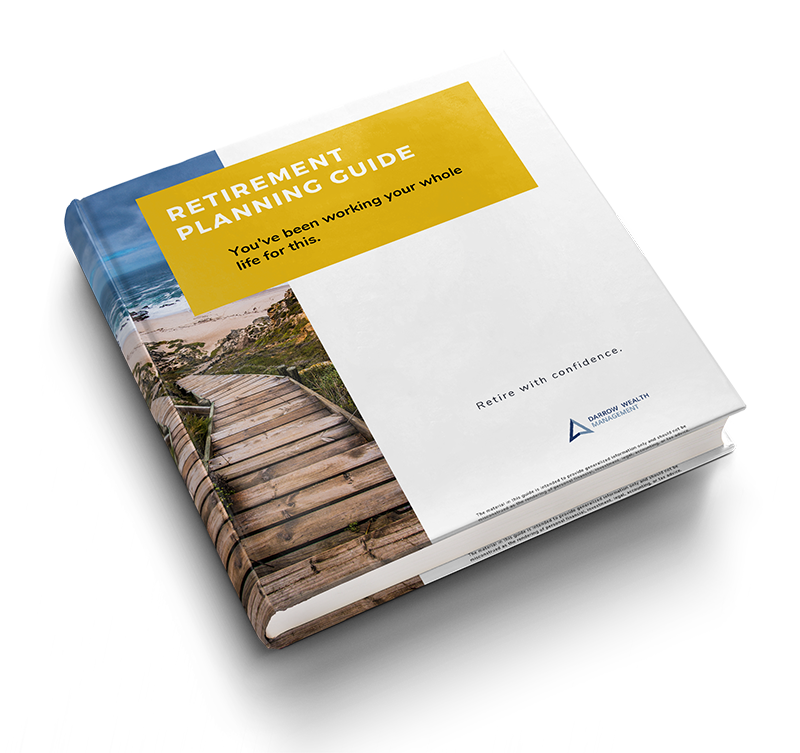If you have company stock in your 401(k), consider the pros and cons of net unrealized appreciation at retirement. Under the net unrealized appreciation rules, employees can roll over the portion of their 401(k) invested in company stock to a brokerage account. In doing so, they could pay tax at more favorable long-term capital gains tax rates (rather than ordinary income) when the shares are sold. It doesn’t always make sense to use NUA – or keep employer stock in your retirement plan – so carefully weigh the pros and cons.
Net unrealized appreciation rules
If you currently have company stock in your 401(k), consider whether to use the NUA tax strategy when you retire. When you leave the company, you have the option to roll your 401(k) over to an IRA. If you are retiring and have employer stock in your 401(k), under the NUA rules, you can consider rolling only the stock into a brokerage account. The rest can go into an IRA.
You’ll pay ordinary income tax on your cost basis in the employer stock. The remaining spread is eligible for long-term capital gains tax rates when the shares are later sold.
The difference between the original cost of the stock and the current market value of the shares at the time of distribution is the net unrealized appreciation.
Net unrealized appreciation example:
Jordan is 62 years old, married, and a longtime employee of Company C. His 401(k) is worth $2M, $500,000 of which is invested in Company C stock. Having appreciated significantly over the years, Jordan’s cost basis in the employer shares is only $150,000.
He retires and takes an in-kind distribution of $500,000 (company stock) into his brokerage account and a direct rollover of $1.5M to his IRA. He pays ordinary income tax on $150,000 (his cost basis, which is the amount he paid for the stock over the years). The direct rollover to an IRA has no tax consequences. Assuming no other income for the year, this puts Jordan in the 22% federal tax bracket for ordinary income in 2024.
Here’s where the potential benefits of net unrealized appreciation come in:
- If Jordan subsequently sold all the company stock, he’d pay long-term capital gains tax on $350,000 at 15%, plus the 3.8% Medicare surtax, for a total tax rate of 18.8%.
- If Jordan rolls the whole $2M into an IRA instead, and takes a $500,000 distribution, he’ll pay income tax on the full withdrawal. The remaining $1.5M will continue to grow tax-deferred. This would push him into the 35% tax bracket federally, 38.8% including the Medicare surtax.
State tax implications may also apply, depending on where you live.
The above NUA example assumes Jordan sells all his Company C stock the same year. But he doesn’t have to. He won’t recognize a long-term capital gain until he sells the shares, though dividends will be taxable annually.
NUA requirements:
- Entire vested balances from all retirement plans with the company must be distributed within one calendar year.
- The company stock must be transferred in-kind. This means the actual shares will transfer to a brokerage account, not cash.
- The transfer must happen after you leave the company, reach age 59 1/2, or following your death/disability. Note, however, if you separate from service before age 59 1/2, you’ll owe a 10% penalty for early withdrawals on the taxable distribution.
Benefits of using net unrealized appreciation
NUA isn’t right for everyone. But in certain situations, the net unrealized appreciation rules can offer additional planning opportunities. Here are some potential benefits of NUA.
- Avoid paying income tax on your entire 401(k) balance. The primary benefit of NUA is the ability to pay tax at more favorable long-term capital gains tax rates instead of regular income, like other pre-tax savings vehicles.
- Reduce your assets subject to required minimum distributions (RMDs) at age 73. This can improve tax planning opportunities in retirement.
- Flexibility to sell employer stock on your own terms. Since there are no holding period requirements, you are free to sell the stock whenever you want. In 2024, married couples pay 0% tax up to $94,050 in long-term capital gains, assuming no other income.
- Accomplish charitable goals. If you have charitable goals, an option could be to donate the stock using a donor-advised fund. After paying tax on the basis, you could receive a tax deduction for the entire market value of the donation if you itemize deductions. However, since you have to pay tax when you do the NUA rollover, other highly appreciated long-term shares in your portfolio might be better candidates for donations of stock.
What are the downsides of NUA?
There are many situations when it doesn’t make sense to use the net unrealized appreciation strategy.
- Concentration. Many employees hold way too much employer stock already, so voluntarily adding to the position doesn’t always make sense. Diversifying has tax implications, except if you sell the stock in a 401(k). So if you’re already overweight employer stock, using NUA could hurt you financially. Compounding the issue, at the beginning of retirement, you’re the most vulnerable financially.
- Tax savings don’t materialize. If your tax bracket when you elect NUA is higher than what it will be in retirement, you could end up paying more tax. Also consider the loss of further tax-deferred growth as the money is in a taxable account vs an IRA.
- Trigger other changes to your tax situation. Depending on your taxable basis in the stock, recognizing a large amount of income could trigger the 3.8% Medicare tax. The tax applies to income and capital gains. Taxpayers’ AGI and MAGI also determines Medicare Part B and D premiums and other tax deductions/credits.
- No step-up in basis. When most taxable assets are inherited, they receive a step-up in basis. This means your heirs could sell the stock immediately (in theory) and pay no tax at all. However, when NUA is inherited, there’s no step-up. Instead, the net unrealized appreciation (difference between the original cost basis and the market value when the shares were distributed) is considered income in respect of a decedent (IRD) and taxed to beneficiaries as ordinary income. Any subsequent gain after distribution is eligible for a step-up in basis under current law.
You’ll also need cash to pay the tax on the NUA rollover. You could raise cash by selling stock or draw on an IRA, but consider the additional tax consequences.
Should you say no to NUA?
It depends! Discuss with your financial and tax advisor before making a decision and consider your other options. For example, sometimes you can make after-tax contributions to a 401(k) to ‘buy down’ the basis in company stock. This shrinks the component taxable as income from the rollover of company stock. Of course, it also increases the taxable spread where long-term capital gains tax applies.
Depending on your ultimate goal with the NUA strategy, another option might be annual Roth conversions in retirement. This reduces assets subject to RMDs and provides flexibility to convert just enough to avoid triggering negative tax consequences. If you are charitably inclined, qualified charitable distributions (QCDs) from your IRA may be an option instead of a donor-advised fund. The good news is that there’s often more than one way to accomplish a financial goal.
This article was written by Darrow Wealth advisor Kristin McKenna, CFP® and first appeared on Forbes.
This article is for informational purposes only and should not be misinterpreted as personalized advice of any kind or a recommendation for any specific investment product, financial or tax strategy. This is a general communication should not be used as the basis for making any type of tax, financial, legal, or investment decision.
Last reviewed February 2024










